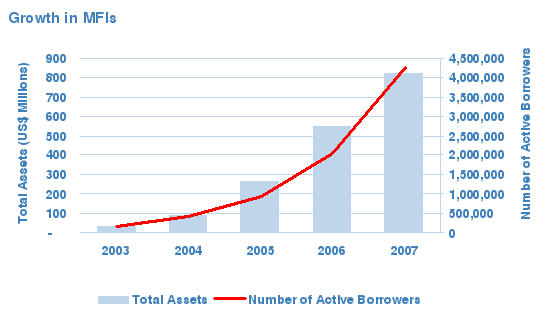Microfinance-Indian Perspective
Abstract
India is the largest emerging market for microfinance, with 300 million poor households, of which only 15-20% have access to the formal financial sector.
A new Celent report, , examines the potential Indian population for microfinance and the opportunities for both microfinance institutions (MFIs) and commercial banks to tap this unbanked and underbanked population. This report also discusses the role of technology and technology service providers. It analyzes various models adopted by MFIs as well as the geographic concentration of MFIs and the reason for such density.
Rural Indians have demonstrated sustenance and self-employment with financial assistance at the micro level. Technology and various delivery mechanisms have become incidental for increasing outreach. Indian microfinance has seen tremendous growth in the last three to five years in both total assets and active borrowers.

Although Indian microfinance is characterized by a large number of small players, the few large players hold a dominant market share, and the rest of the market is fragmented. The top 10 MFIs hold about 63.3% of the gross loan portfolio and 65% of total assets. India is one the largest emerging markets in microfinance in the world, but the market has only reached one-fifth of the country's poor. For the past two years, many public and private sector banks, along with various overseas retail banks, have been aggressively eyeing the market.
"Indian microfinance will see further growth in commercial funding due to increasing interest from banks. The sector will also see a large number of investors from both business development companies and investment funds coming forward to invest in Indian MFIs," says Prathima Rajan, an analyst at Celent and author of the report.
Major MFIs are adopting the latest technology to increase outreach and accessibility. However, it is the technology service providers that are constantly innovating new means and modes to reach the rural poor.
The report also looks at recent developments in the microfinance sector and forecasts future challenges.
The 36-page report contains 10 figures and 2 tables. A table of contents is available here.
Members of Celent's Retail Banking and Wholesale Banking research services can download the report electronically by clicking on the icon to the left. Non-members should contact info@celent.com for more information.
